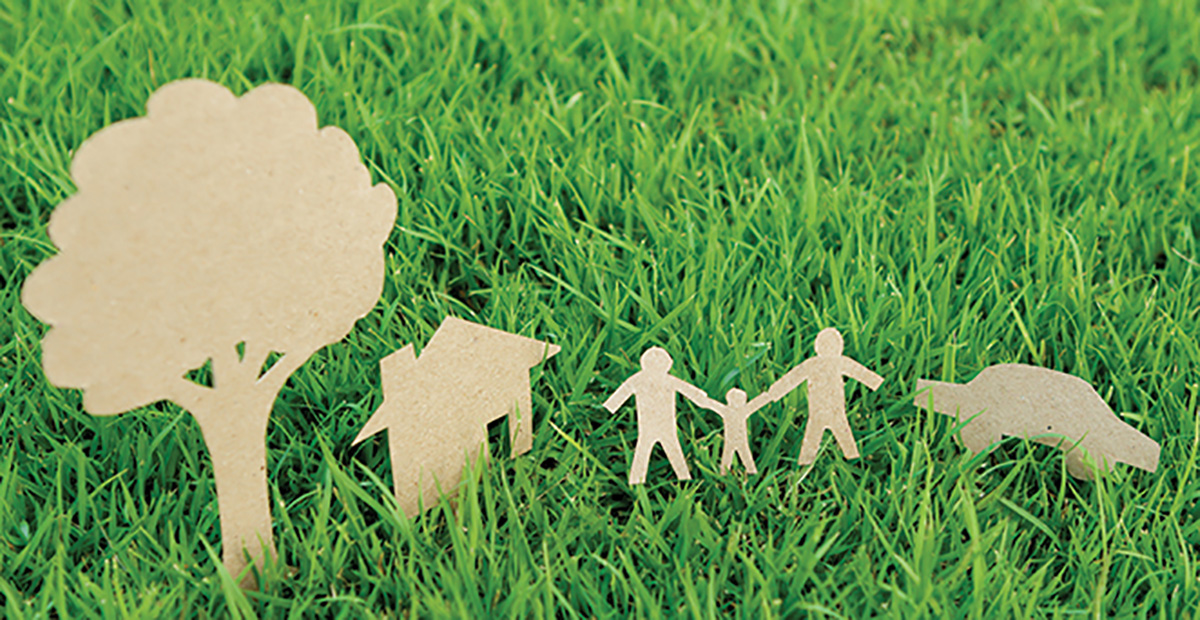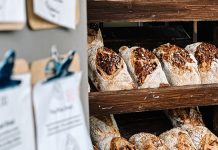 Home. The word itself almost glows with an inner light. Whether one has had many around the world or stayed in a tight radius their whole lives, home is a place of past memories and those yet to be made. And yet, how does one define it? The dictionary dryly calls it “the place where one lives permanently, especially as a member of a family or household.” While technically correct, there’s an extra element, a depth, a certain je ne sais quoi.
Home. The word itself almost glows with an inner light. Whether one has had many around the world or stayed in a tight radius their whole lives, home is a place of past memories and those yet to be made. And yet, how does one define it? The dictionary dryly calls it “the place where one lives permanently, especially as a member of a family or household.” While technically correct, there’s an extra element, a depth, a certain je ne sais quoi.
Author Ayn Rand once wrote: “A building is alive, like a man. Its integrity is to follow its own truth, its one single theme, and to serve its own single purpose…its maker gives it the soul, and every wall, window and stairway to express it.” So is it the combination of the right structure and the right inhabitants? Does the building make the home?
Houses, it seems, are everywhere, but we rarely think about the immense thought, planning and effort that goes into each and every structure we see. Nakin Suksawang, who is an Assistant Professor of Civil Engineering with a specialty in structural engineering at the Florida Institute Of Technology offers a very valuable perspective: “We as structural engineers have an immense, unstated trust from the public,” he says. “People walking into a building or across a bridge never question whether it will collapse or fail, and it is our job to make sure that whatever we make exceeds these expectations from the public and that we live up to our responsibility as builders. From an engineering point of view, we take great pride in what we design, and the building needs to have the best interests of the occupants at heart.”
 Adding to that thought, Frank Mackle, President & Owner of Mackle Construction, the firm that developed a great deal of Key Biscayne’s residential and commercial buildings, says that the comfort of the clients is always at the forefront of a designer’s thoughts. “A client feels that a house is a home when the people living in it feel warmth and comfort no matter what the style of the structure is,” he explains. “When a client gets to choose elements that are important to them, they become more attached to their house as well, whether the structure is traditional, colonial or modern.”
Adding to that thought, Frank Mackle, President & Owner of Mackle Construction, the firm that developed a great deal of Key Biscayne’s residential and commercial buildings, says that the comfort of the clients is always at the forefront of a designer’s thoughts. “A client feels that a house is a home when the people living in it feel warmth and comfort no matter what the style of the structure is,” he explains. “When a client gets to choose elements that are important to them, they become more attached to their house as well, whether the structure is traditional, colonial or modern.”
Finding the right place to build one’s home is also an important part of the process. Steve Brown, President of the National Association Of Realtors, says that he see this in his members’ daily lives as they work with clients to pinpoint exactly the type of place to set their roots. “A house provides more than shelter for a family,” he says. “It’s the place where you learn to ride your bike and celebrate birthdays. Home is where we make memories, build our futures and feel comfortable and secure.” It’s the daily living in the space that builds those memories and generates that intangible sense of home and comfort. Paul J. Slattery, Principal of Slattery & Associates Architects Planners, agrees. “When it comes down to it, it’s about liveability,” he says. “The difference between the structure we call a house and a home is how the people interact and live within it. When the people feel free to really live in a place, then it becomes their home.”
 It can be difficult, however, when the slings and arrows of the unexpected interrupt that process. University Of Miami Associate Professor of Educational & Psychological Studies Dina Birman, who has written extensively on psychology and immigration, explains a bit about how people who have relocated go about rebuilding their roots. It’s about having a warm space, a comfortable space and a safe place, she notes. There was a couple she recalls who were newly arrived to the U.S., and the husband asked his wife if she felt like she was home yet. “I think for people who have left under certain circumstances, they don’t have things that have been passed down for generations or even their family photos, so when they get the opportunity to have or make those things, it builds on the sense of home,” she says. For people in times of stress, she adds, it’s important to establish routine, especially for children as they’re growing up. “Kids are very conservative that way,” Birman says. “They love their rituals and routines.” Most, when thinking of childhood, can recall certain family traditions and the comfort that came with them; a sense of predictability has been shown to be linked to a feeling of safety.
It can be difficult, however, when the slings and arrows of the unexpected interrupt that process. University Of Miami Associate Professor of Educational & Psychological Studies Dina Birman, who has written extensively on psychology and immigration, explains a bit about how people who have relocated go about rebuilding their roots. It’s about having a warm space, a comfortable space and a safe place, she notes. There was a couple she recalls who were newly arrived to the U.S., and the husband asked his wife if she felt like she was home yet. “I think for people who have left under certain circumstances, they don’t have things that have been passed down for generations or even their family photos, so when they get the opportunity to have or make those things, it builds on the sense of home,” she says. For people in times of stress, she adds, it’s important to establish routine, especially for children as they’re growing up. “Kids are very conservative that way,” Birman says. “They love their rituals and routines.” Most, when thinking of childhood, can recall certain family traditions and the comfort that came with them; a sense of predictability has been shown to be linked to a feeling of safety.
 Influential Author & Speaker Stephen Covey once said: “When it comes to developing character strength, inner security and unique personal and interpersonal talents and skills, no institution can (or ever will) compare with, or effectively substitute for, the home’s potential for positive influence.” This has proven especially true for those who have moved around from one address to the next, putting roots down in different areas and making their own families in new places.
Influential Author & Speaker Stephen Covey once said: “When it comes to developing character strength, inner security and unique personal and interpersonal talents and skills, no institution can (or ever will) compare with, or effectively substitute for, the home’s potential for positive influence.” This has proven especially true for those who have moved around from one address to the next, putting roots down in different areas and making their own families in new places.
As an immigrant herself, Birman laughs when recalling her husband’s consternation at what she jokingly calls her “chronic remodeling disorder” and the accuracy of a friends’ reply: “She may never be done… this is the process of making a home, for those who have been dislocated,” her friend said. “The important thing is not the outcome, it’s the process of turning a space into a home.”











